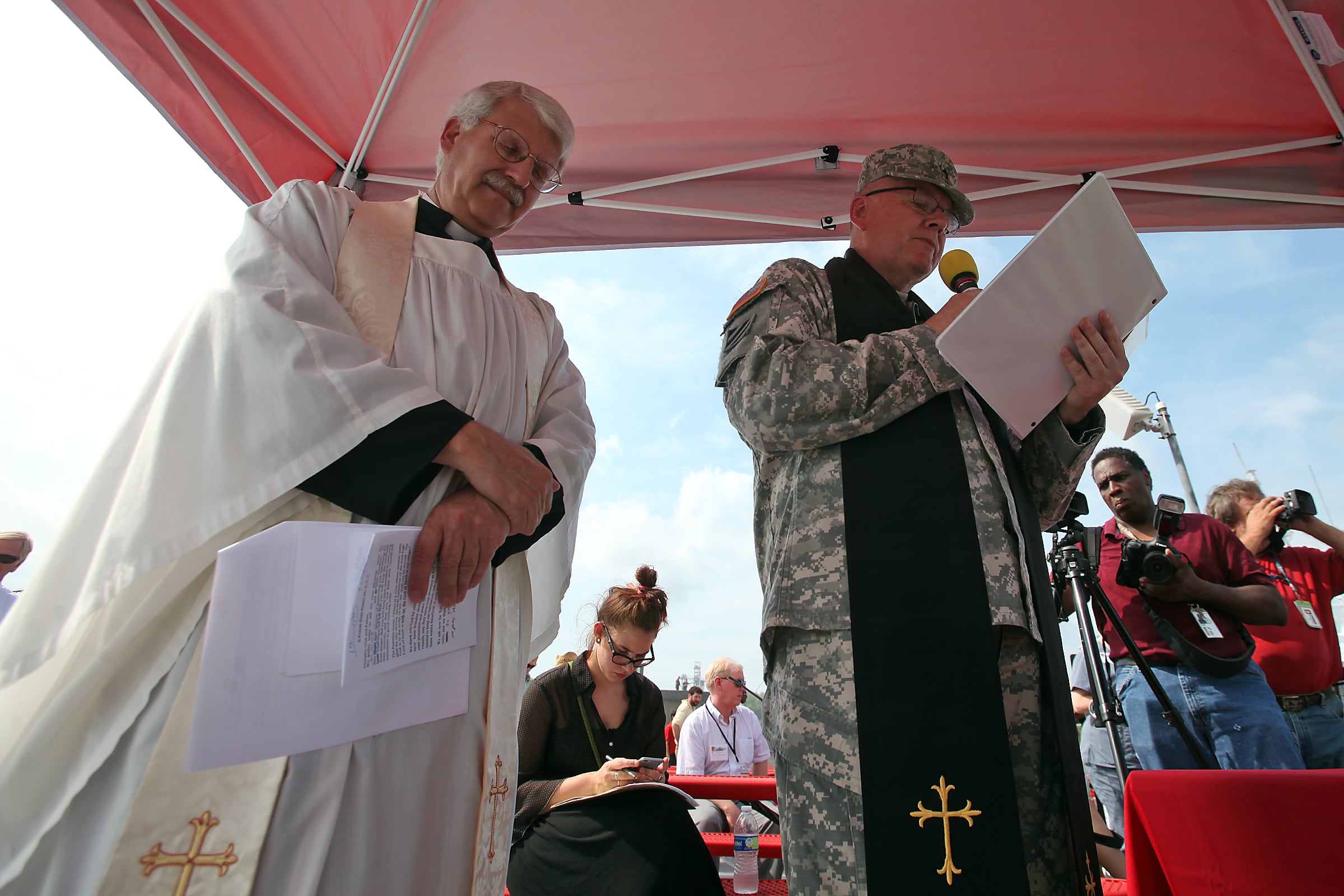There's only one way to advance in the Navy without taking an advancement test — and the first year under the new rules is coming up fast.
Starting in July, commands will have three months to spot advance sailors to E-4, E-5 and E-6 via the Command Advancement Program under the new rules. the first CAP season under the Navy's new program begins and CO's will have three months to advance those under their command they feel are worthy of this spot and meritorious program.
Navy officials also want commanding officers to now want commanders to avoid stay away from using their highly sought CAP slpots to advance sailors who can't move up on their own or who are facing high-year tenure limits. Command Advancement Program simply to advance their sailors who can't seem to pass the test with a high enough score to advance.
Instead, CO's should be advancing their hot-runners, even those who may be a shoe-ins to pick up rank on their next cycle, said In fact, when Chief of Naval Personnel Vice Adm. Bill Moran, who added this may be a cultural shift for some commands. says he want to change the culture and have CO's instead use CAP to advance their hottest running sailors, especially those they believe are a shoe-in on the next text cycle.
"The quality of our force and individual talents of our Sailors have grown dramatically since we introduced CAP in the 1970s, Vice Adm. Bill Moran -- chief of naval personnel, told Navy Times an April 16 interview.
What he doesn't want is skippers to use CAP used to advance sailors who "aren't good test takers." or those in danger of going home due to high-year tenure.
"This program was always intended to provide commanding officers the opportunity to meritoriously advance sailors who were ready for the next level of responsibility. Today, I'm confident that our COs and chief's mess know best who is ready, and trust that they will continue to exercise this special authority to advance their best talent — sailors of the year, hot-running guys or gals who stand out, sailors who have ability to lead at the next level."
The essentials of the Command Advancement ProgramWhat you need to know:
"The quality of our force and individual talents of our sailors have grown dramatically since we introduced CAP in the 1970s" Vice Adm. Bill Moran -- chief of naval personnel, told Navy Times April 16. "Using these authorities granted we want to provide commanding officers the opportunity to meritoriously promote those sailors who are ready for the next level of responsibility.
"Said simply, don't wait for the test, use CAP to promote your best--your sailor of the year, that hot-running guy or gal who stands out -- Our COs and chief mess know best who is ready now, they don't need to wait for the Bureau to tell them."
CAP season
The new program went into effect Oct. 1. The old, year-round program is now gone and CO's are now restricted to a three-month "window" each year between July 1 and Sept. 30 to advance top their best sailors.
To get the best benefit, Officials say to benefit their sailors the most CO's should prepare early and submit CAP certification letters on July 1 to make their sailors' advancement effective date also July 1. That way, sailors will start getting paid at their new paygrade on that date, too. because that will make the effective date for the advancement also July 1. This means that their sailors start getting paid on that date, too.
Eligible commands
Currently, the program is only open to sea duty commands, such as ships, submarines and squadrons. In addition, a few special shore duty commands have the right to use CAP, including Navy Recruiting Command, the Recruit Training Command Great Lakes, Illinois, the Ceremonial Guard and the USS Constitution.
If you know your command's's UIC — unit identification code — you can see if your command is eligible by reviewing on NAVADMIN of to NavAdmin 245/14 and see if your command is eligible. The message is available at http://www.public.navy.mil/bupers-npc/reference/messages/documents/navadmins/nav2014/nav14245.txt
Overhauling CAP
Many Navy manpower planners blamed overmanning in many ratings on this spot promotion program and called for it to be eliminated. But Moran, who is in favor of giving CO's as much authority as possible over their own people, wanted to save it.
Having a CAP Sseason was the compromise.
Officials say that by limiting it to this three-month window is in the summer the best choice, as it allows the program to be aligned with within a given fiscal year. CO's must advance their people by Sept. 30 and submit the documentation to Navy Personnel Command by Oct. 15, information then used by advancement planners to adjust quotas for the fall advancement cycle. have over a month before the usual Thanksgiving Time release of the quotas and names for the fall advancement cycle.
This allows them to properly manage advancements so no ratings advance too many and risk gumming up advancements for everyone else. overmanning.
Officials hope it is not a difficult adjustment to the new system. As it was, roughly 86 percent of all spot advancements in the Navy happened during the summer months before.In addition, Navy studies of of CAP advancements showed that 86 percent of all the spot promotions in the the Navy happened during the summer months anyway.
But most of all, having it start shortly after the spring cycle helps advancement planners because CO's must advance their people by Sept. 30 and submit the documentation to Navy Personnel Command by Oct. 15, advancement planners have over a month before the usual Thanksgiving Time release of the quotas and names for the fall advancement cycle.
Setting quotas
There are a total of 2,238 CAP quotas available Navy-wide for fiscal year 2015. But not all of them traditionlly get used, In 2014, CO's only advanced about 1,600 sailors, down from about 1,700 in fiscal 2013.
But officials also noted the 2014 season was cut short by about three months in the shift from a calendar year to a fiscal year program.
How many advancements a CO is authorized to make is based on the size of the command. Those with 100 or fewer authorized enlisted billets can CAP two sailors: one to E-5 and one to E-6.
Those with with more than 100, but fewer than 1,000, billets, like a cruiser, get two E-5 quotas and one for E-6. Those between 1,000 and 2,000, like a big deck amphib, get four E-5s and two E-6s.
The largest sea going commands, commands like aircraft carriers, with upward of 2,000 billets, can spot-advance six E-5s and two E-6s.
There are no quotas to for E-4, commands can use take us E-5 or E-6 billets to and instead advance someone to E-4, but they're still limited to the total number of quotas allowed by their command size.
Future possibilities
Right now, officials are taking a wait-and-see attitude on anymore tweaks to the CAP program, but there's already ideas being tossed around in the fleet and in Washington.
For now, the only way to get an automatic advancement to chief is through the Sailor of the Year selection process, in which four E-6s are spot-promoted.
Originally when Moran was mulling the change to the CAP season he also considered authorizing more of these spot promotions, too. But in the end, he decided to hold the program in place and let the new rules take effect first.
Once officials see who is getting advanced as well as how many, they'll re-evaluate again — but that could take some timeat least a year or more to get a new look.
Many sailors told Navy Times last year that they'd like to see the program expand to shore duty commands, too, a move that officials said they'll consider.
"It's something that has been discussed, because it's something we're hearing from sailors a lot," a the senior personnel leader said. "It's something we're interested in investigating, but we need to reserve this now, at least in the short-term, to sea duty and special shore commands."
Mark D. Faram is a former reporter for Navy Times. He was a senior writer covering personnel, cultural and historical issues. A nine-year active duty Navy veteran, Faram served from 1978 to 1987 as a Navy Diver and photographer.





